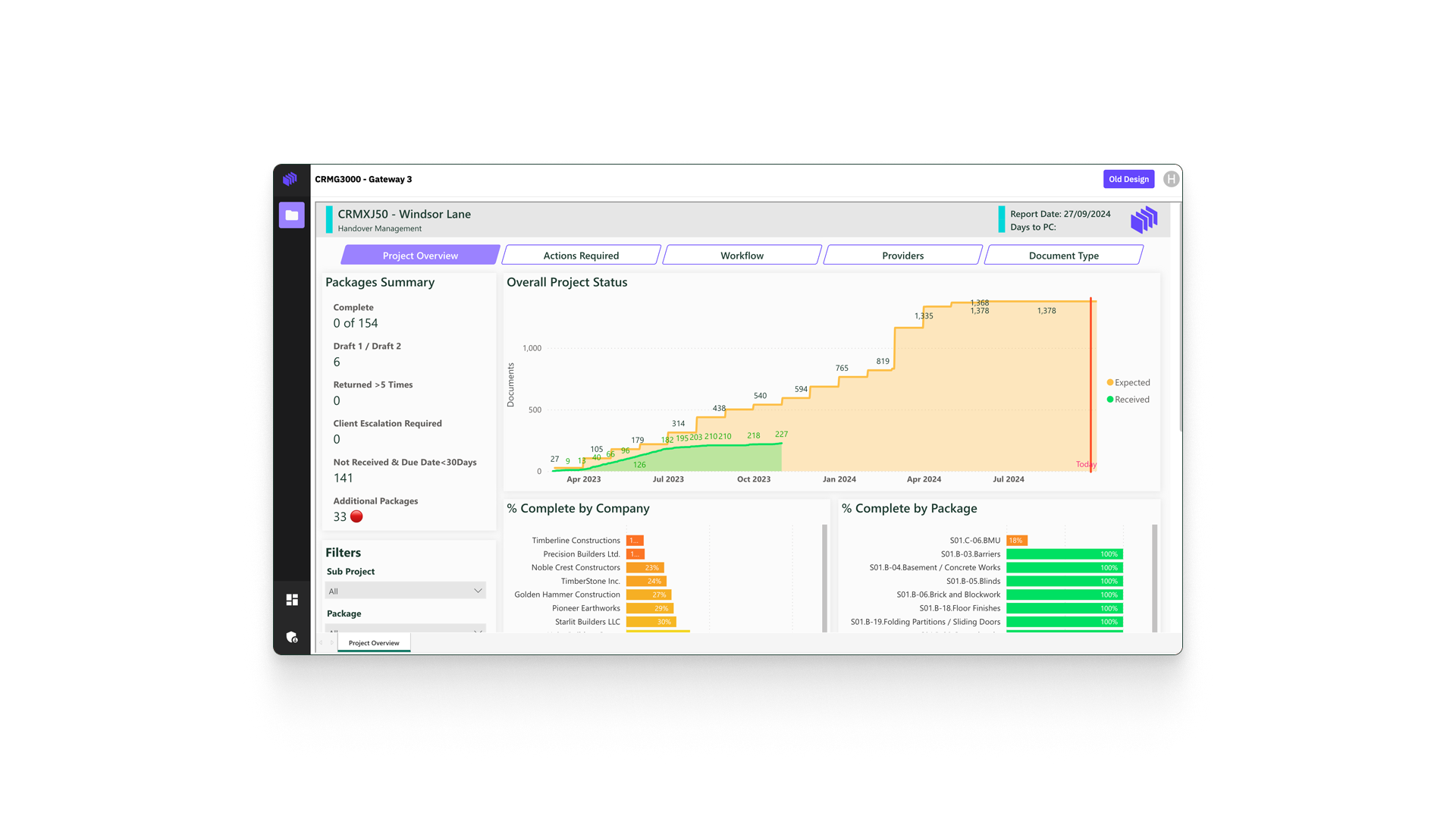Construction handover is a critical phase in any build, and it’s rarely straightforward. Mixed-use developments, multi-phase residential schemes, and complex commercial sites all present unique challenges for handover.
The difficulty isn’t just in building the project, it’s in structuring the final handover information for each asset and tenure in a way that is useful for the people who will manage and operate it.
Too often, handover documentation deliverables don’t reflect the practical needs of facilities managers or asset owners. Instead, they’re shaped by misaligned contractual needs, or worse, left to evolve in an ad-hoc way as the project nears completion.
This can lead to duplication, confusion, and building manuals that are poor in quality and difficult to use. To avoid some of this, contractors should align handover outputs with the geography of the site and the practical needs of end users.
At Zutec, we’ve analysed data from over 5,000 completed digital handovers, and overlapping information can be one of the biggest obstacles facing mixed-use or multi-phase projects.
The Geography-Driven Handover Playbook
Get clear, navigable, and compliant documentation for every block, every project, and every phase — no duplication, just efficient results.
Tenure challenges in construction handover
In today’s complex developments, each property might operate under a different ownership arrangement or “tenure”: some units are bought and lived in by their owners, some are leased for the long term, others are rented out through social housing schemes, and a few may be part of shared ownership agreements.
This mix is designed to meet a variety of consumer needs, but it can create confusion when it comes to handover documents. Often, contracts request separate information per tenure type. When requirements demand separate manuals or records for each type of ownership, teams often end up duplicating the same information, despite the fact that the buildings are managed by the same facilities team and share common systems like fire alarms, lifts, and heating. This leads to unnecessary repetition and inefficiency.
Instead of supporting efficient building management, this creates duplication of information and bloated O&M manuals that are difficult to navigate. This approach creates complexity, delays approvals, and increases the likelihood of errors creeping in, which can ultimately lead to risk.
Tenure challenges in construction handover
In today’s complex developments, each property might operate under a different ownership arrangement or “tenure”: some units are bought and lived in by their owners, some are leased for the long term, others are rented out through social housing schemes, and a few may be part of shared ownership agreements.
This mix is designed to meet a variety of consumer needs, but it can create confusion when it comes to handover documents. Often, contracts request separate information per tenure type.
When requirements demand separate manuals or records for each type of ownership, teams often end up duplicating the same information, despite the fact that the buildings are managed by the same facilities team and share common systems like fire alarms, lifts, and heating. This leads to unnecessary repetition and inefficiency.
Instead of supporting efficient building management, this creates duplication of information and bloated O&M manuals that are difficult to navigate. This approach creates complexity, delays approvals, and increases the likelihood of errors creeping in, which can ultimately lead to risk.
Common risks in construction Handover processes
When handover is structured in a way that is unwieldy to manage, everyone loses. Contractors waste time duplicating information, stakeholders struggle with reviews, and clients end up with O&M manuals that are frustrating to use. For facilities managers, this creates a long-term operational headache.
Imagine trying to locate information about a pump that serves multiple blocks, only to find the same details repeated across three different manuals. If each version contains slight differences, which one should you trust? Which is up to date? This lack of clarity can delay maintenance, drive up costs, and even pose compliance risks.
Or, what if a multi-phase project has separate PC dates and the client requests a handover as each building completes? Unnecessary duplication in O&Ms for buildings in later stages of a project can lead to confusion, wasted time, and a poor client experience.
For most projects, the simplest and most intuitive split is by block or building. This mirrors how facilities managers actually operate day-to-day, making it easier for them to locate and use the information they need.
By involving a specialist digital handover provider, the project team can co-create a handover structure and building manuals that balance contractual obligations with operational practicality.
How Zutec supports geographic alignment in construction Handover
Zutec’s Digital Handover Solution makes it simple to structure outputs in a way that reflects the real-world geography of the site. Information can be logically split by block, phase, or asset type, and linked across tenures where necessary without duplication.

The result? A set of digital O&M manuals that are well-structured, free from duplication, and genuinely useful for long-term operations. With Zutec, contractors benefit from a managed solution that enables them to:
- Collaborate early with clients to agree on practical structures.
- Tag and filter data in one platform to meet multiple requirements without duplication.
- Generate digital O&M manuals that are easy to navigate by geography.
- Ensure consistency and standardisation across phases, even on large, complex projects.
Handover usability wins every time
Contracts may set the baseline, but the true measure of handover success is how usable documentation is for the people who need to access it day-to-day. Aligning handover outputs with the geography of the site ensures clarity, avoids duplication, and delivers a better experience for contractors, clients and facilities managers alike.
By working with a digital handover specialist like Zutec, contractors can strike the right balance between contractual compliance and operational practicality, ensuring that every project finishes as strongly as it started.
Ready to align your next project’s handover with real-world needs? Read our 2-minute Playbook. Or explore Zutec’s Digital Handover Solution and deliver outputs that work for everyone.